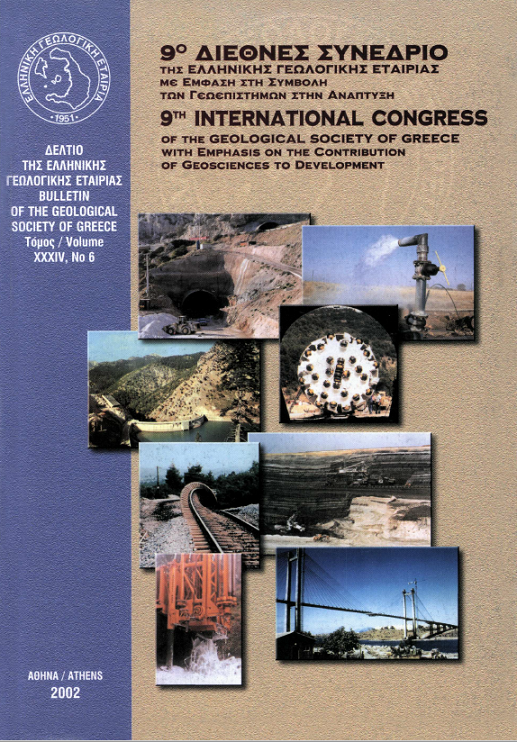Fault rupture propagation through soft soil covers
Résumé
The article presents the methodology and preliminary results from analytical simulations regarding fault rupture propagation through soft soil cover. The analyses employ the Finite Difference method for the numerical solution of boundary value problems, combined with appropriately chosen constitutive model for the shearing response of the soil cover, velocity time history for the rupture and boundary conditions. Analytical predictions are compared to field observations for an overall, qualitative as well as quantitative, evaluation of the methodology. In addition, results from an extensive parametric study are used for an initial definition of the basic design parameters in the vicinity of the fault trace and their possible range of variation.
Article Details
- Comment citer
-
ΜΠΟΥΚΟΒΑΛΑΣ Γ., ΛΟΥΚΙΔΗΣ Δ., & ΚΩΝΣΤΑΝΤΙΝΟΣ Α. (2002). Fault rupture propagation through soft soil covers. Bulletin of the Geological Society of Greece, 34(6), 2255–2262. https://doi.org/10.12681/bgsg.16866
- Rubrique
- Special and Keynote Lectures

Ce travail est disponible sous licence Creative Commons Attribution - Pas d’Utilisation Commerciale 4.0 International.
Authors who publish with this journal agree to the following terms:
Authors retain copyright and grant the journal right of first publication with the work simultaneously licensed under a Creative Commons Attribution Non-Commercial License that allows others to share the work with an acknowledgement of the work's authorship and initial publication in this journal.
Authors are able to enter into separate, additional contractual arrangements for the non-exclusive distribution of the journal's published version of the work (e.g. post it to an institutional repository or publish it in a book), with an acknowledgement of its initial publication in this journal. Authors are permitted and encouraged to post their work online (preferably in institutional repositories or on their website) prior to and during the submission process, as it can lead to productive exchanges, as well as earlier and greater citation of published work.



